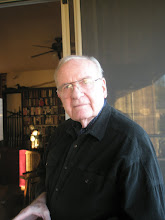It
is said that terrorism is the weapon of the weak against the strong. It's a
saying that sounds good if one is seeking to defend or justify terrorist acts.
However, it is just not true – at least if one is willing to consider blowing
up a peaceful civilian structure as a terrorist act. The civilians in the
building are hardly strong: they are defenseless and unprepared. The real
strength lies with the terrorist bombers. They have all the advantages –
weapons, organization, secrecy, initiative and commitment. Terrorism as a
device is available to all. It's just a matter of utilizing a particular form
of weapon for use in spreading fear while degrading the physical image of a
something that is considered as playing part in the maintenance of order in an
enemy's infrastructure. This means everything from community activity and
edifices to their civil and security services. In other words, destabilizing
any aspect of orderly life is a target. Of course, the military is not excluded, as was well shown by the bombing
of the Marine barracks in Beirut in 1983. That was a target because there was
no one available to shoot back as the hundreds of U.S. Marine peacekeepers and their French Army
counterparts were all off-duty with most of them asleep when they were killed.
The
question exists therefore as to what isn't terrorism? The massive raids by
American and British bombers on German cities during World War II clearly
terrorized the German civilians. However, it didn't stop the German military
operations. Loss of productive capability and stores of equipment as well as
destruction of units in the field rolled back the German army. In fact, the
simple advance of Allied forces across Europe dislocated all enemy life just as
the Germans had done when they attacked throughout Western and Eastern Europe. Basically,
in traditional warfare the aggressor is always charged with “terrorism” in some
form or other. Terrorist acts by those on defense tend to be excused or not
commented on because they are the “weaker” party. The fact is that in the
so-called civilized world the rules of warfare earlier defined all action by
non-uniformed belligerent civilians as either “partisan” or “guerilla” activity
and only more recently terrorism by terrorists. In any case the end result is
the same: civilians causing destruction and spreading terror usually against
other civilians and only occasionally regular military units.
Terrorism
has been the principal weapon of a wide variety of organizations with differing
characteristics and targeting. The contrast between and among the PLO, IRA, Red
Brigades. ISIS, al Qaeda, Hamas, al Shabaab, Hezbollah, etc. points to
variations in strength, popular support, political, religious and class
background and even rural or urban bases. The tactics of a given group will be
tailored to achieving their selected ends in accordance with their own
characteristics and ambitions. Often a distinguishing characteristic will be
assistance a given grouping will receive from international sponsors –
political and religious. In turn, the recipient organization may reflect
interests of the sponsors. However, that too can be transient depending on the
relationship and degree of control the foreign donor/guide has over the local
terrorist team.
The
Iranians have utilized their commitment to Shia Islam to organize and train
terrorist activities in the Middle East. For their part, the PLO has had little
or no interest in other non-Palestinian groups. However, component parts of the
Palestinian movement, for example PFLP, Al Fatah, etc. have acted as models and
even guides for other unrelated terrorist elements. It is worthwhile to note
the Russians, and even West European anarchists, have found PLO-affiliated
instruments useful collaborators and support groups.
Terrorist
actions in the context of an ongoing war are different from the covert
terrorist actions perpetrated in the general environment of an otherwise
peaceful national identity. Nonetheless, terrorism as a warfighting device is
of limited effectiveness despite its horrific character. If the point of using
terrorist tactics is to scare the target into being compliant, history has
shown it can be seriously counterproductive during an ongoing war. The other
side just escalates its own deadly actions in response. Terrorist actions in a
generally peaceful environment may produce a brief period of shock, but soon
the population and its leadership react strongly.
Terrorism
brings about a radical reaction among even the most peaceful of communities. If
the target community already is under the control of a despotic authority, the
latter's use of terror may work in the short term, but inevitably these
horrific acts encourage the development of serious – if covert – resistance.
It's definitely not an effective method of long-term population control. The
World War II example of the Japanese occupation of the Philippines and efforts
to control their population gives a very clear example of a failed attempt at
using intimidation to the point of deadly force to persuade the civilian
population to accept subservient status. Torture, imprisonment and general
harsh treatment brought nothing but grief to the Japanese invaders.
In
the case of traditional terrorist groupings, their aim is to destabilize the
existing civil structure in order to subvert the current form of governance. On
average terrorist tactics tend to place the civilian population in a fearful
and insecure state. Contrary to the aim of the terrorists, the result can be
far from advantageous. The target population tends to react in a contrarian
manner as their fear grows. Terror is just a very poor method of encouraging
support. It does, however, allow the terrorists to think they are doing
something positive. The basic fallacy of this destructive methodology is
obvious, but it does not appear to stop groups and individuals from thinking
they are warriors for their cause. The logic of inflicting pain to instill
subservience works only temporarily. That is the lesson of history.

Comments
Post a Comment